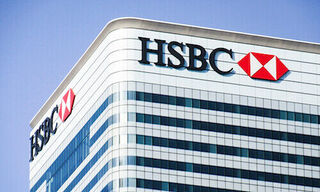Newfound pressure on margins in its main wealth management business won’t help it to cut the valuation gap to North American peers or convince US institutions to step in. finews.asia takes a look.
Banking analysts have since returned to their offices and are ensconced behind their desks, refining their future earnings projections for Switzerland’s largest bank.
As they update their spreadsheets with UBS’s fourth quarter and full-year results, released Tuesday, they may find something slightly off-kilter. The current interest rate environment is not doing any favors to the bank’s core wealth management business.
Lower Margins
In that business, the two main sources comprise recurring net fee income and net interest income, with some transaction income almost as an afterthought.
Net fee income is usually by far the most important component in the mix. In the fourth quarter, it comprised 52%, or more than half, of all the business’ revenues while making up almost a third with 32 percent.
A year earlier, however, net fee income comprised 60 percent of revenues and net interest income made up 23 percent.
Deteriorating Mix
It is not a favorable trend for UBS, particularly if the mix between fee income and net interest income continues to deteriorate.
That is because, although net interest income did rise in the fourth quarter by 35 percent or $385 million from a year earlier, the final $1.499 billion number was influenced by two different dynamics.
The first was positive. Deposit revenues were up from higher interest rates and, consequently, higher deposit margins. The second less so, as that improvement was somewhat counterbalanced, or offset in disclosure speak, by shifts towards lower-margin products and the necessity of paying higher interest rates to clients.
Moreover, it was compounded by a decrease in average deposit volumes, and shrinking loan revenues, the latter weakened by lower average volumes and margins.
Margin Compression
The only thing that might compensate for all that would be to cut operating expenses by an even sharper margin, but at best they only look modestly lower when the year-earlier French cross-border tax litigation provision is deducted.
By the looks of it, at least currently, it seems that the trend is for compression of margins and a deteriorating revenue mix in its most important business, something that analysts rarely take a liking to.
Don’t get me wrong. UBS remains a well-managed, highly profitable bank that appears to have coped extraordinarily well with the adverse environment much of the world experienced last year.
Stuck Needle
To use a well-worn business cliché, none of this is likely to move the needle with US institutional investors.
As finews.asia previously reported, UBS’s current market value is far lower than its US peers and its shares are at 1.2 times book value against Wall Street counterparts such as Morgan Stanley, which is at 1.7. Still, on Tuesday the bank reconfirmed the same financial targets for 2023 even though it has met or has been near most of them on a quarterly and annual basis for the better part of a year.
Putting all of that up together with a deteriorating revenue mix in its largest and most profitable business is going to make for an interesting investor pitch deck, albeit a hard sell.



























